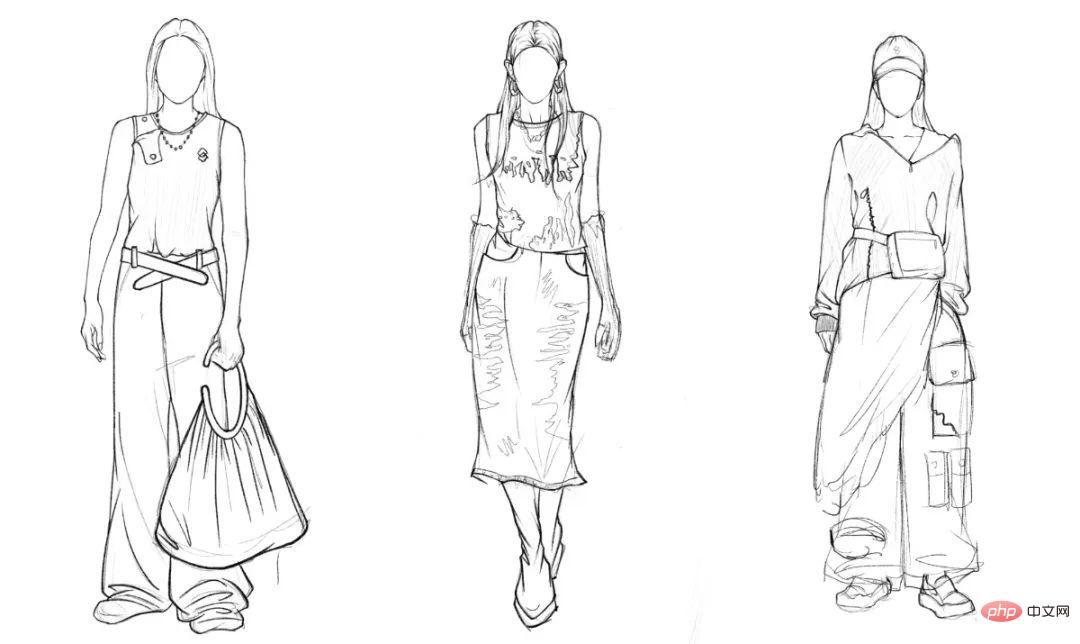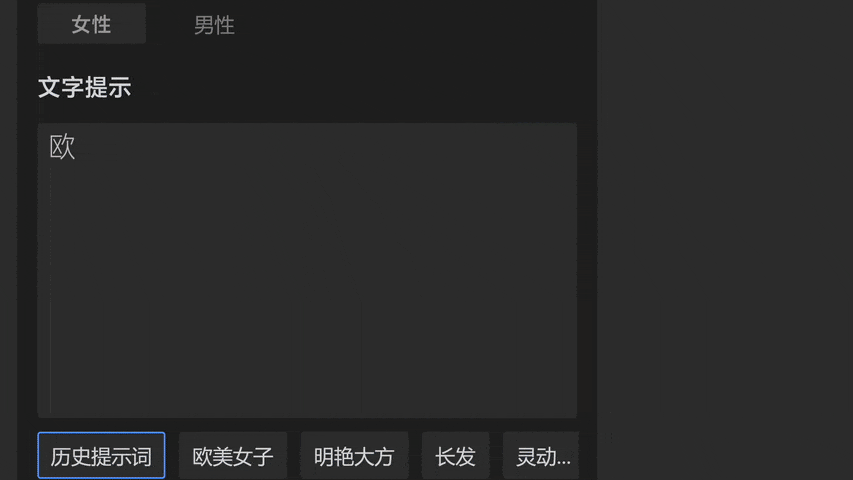 Technology peripherals
Technology peripherals
 AI
AI
 Under the great wave of ChatGPT, AIGC has begun to transform the fashion industry
Under the great wave of ChatGPT, AIGC has begun to transform the fashion industry
Under the great wave of ChatGPT, AIGC has begun to transform the fashion industry
Within five days of going online, the number of users exceeded one million, and within two months it exceeded 100 million... This is the online record of ChatGPT, the "top-tier" in the technology circle, which triggered the AIGC craze that continues to this day. . The omnipotent dialogue and exquisite drawings produced in seconds, commonly known as "tired AI workers" are making real workers feel anxious.
In fact, artificial intelligence is essentially a technical tool. Behind the challenges, there are greater opportunities. Entrepreneurs are excited about how to combine it with AI to accelerate efficiency and productivity, while more and more smart employees are actively learning AI applications to increase their capabilities. The way of working redefined by AI also makes enterprises more dependent on creators who actively embrace changes and establish working models in the new era.
In an industry that is crazy about pursuing efficiency and productivity, fashion must be at the forefront. So, how will AIGC be used by the fashion industry? What empowerment will it bring to designers? How can apparel companies that have been baptized by digitalization seize the opportunities of AIGC? Or here can give you some answers:
The fashion industry is a very suitable industry for AIGC to be implemented
First of all, let’s take a look at the first principle of the fashion industry: the essence In fact, the fashion industry is an industry that relies on a large number of “new products” to drive consumption. Here, women who always think there is one less item of clothing in their wardrobe may feel the same way. From the perspective of consumer portraits, increasingly personalized clothing needs also determine the natural non-standard attributes of clothing products. In order to meet the diversified consumption needs of clothing consumers, clothing brands must actively pursue multi-SKU strategies. Taking a leading global instant fashion e-commerce platform as an example, the daily demand for new products is 5,000-6,000 SKUs. It is enough to see that "continuous creation" is a fashion pursuit that never stops. At the same time, the fashion industry also has another characteristic: it is an industry that uses "approximation" to deliver creativity. In several movies about fashion, whether it is "Dior and I" or "Coco Chanel", we have seen the artistic picture of the birth of a piece of clothing: a design master finds inspiration, draws a sketch based on the inspiration, and then builds on it. The entire production team and designers work together to finally present a high-end garment through the combination of fabrics, accessories, and technology. Here, the most important thing is the master's "inspiration", and what he draws is also a "sketch".
The particularity of the fashion industry is that it is extremely creative-driven, and these creative ideas often have a certain tolerance for accuracy, which is also in line with the characteristics of current AIGC applications.
The fashion industry has a long history and has formed a complete industrial chain, from raw materials to design and production to finished product sales, with a large number of structured data. Take the Pantone color card, a color commonly used in the fashion industry, as an example. The new version of the clothing and textile TPG color card has 2,310 colors, which does not include metallic color cards and color bridge cards. These seemingly subjective clothing colors actually have 2310 clear standard color numbers behind them. It is these structured data that lay the foundation for the application of AIGC in the apparel industry. 
Under the pursuit of extreme efficiency and the need for a lot of creativity, the fashion industry is becoming the best experimental field for AIGC implementation.
What kind of companies can implement AIGC in the fashion industry?
From an implementation level, leading companies that serve fashion digitalization, have professional scene understanding, good data base, and continuous model research and development capabilities, will have the ability to implement AIGC in the fashion industry.We have seen a leading domestic enterprise focusing on the digitization of the apparel industry and has just released an AIGC-based application - Lingdi Style3D. According to official information, Style3D is the world’s leading 3D digital solution provider focused on serving the apparel industry. It is an enterprise that serves the entire chain of the apparel industry, including fabric merchants, accessories merchants, design manufacturers, and brand owners, and has accumulated a large amount of structured data.
AIGC’s strong emergence capability relies on a large amount of structured data support. Although the AI models currently on the market can achieve application effects in multiple scenarios and fields, they are not suitable for the vertical fashion industry. Not the optimal solution. The reason is, on the one hand, the professionalism of the data, and on the other hand, the model convergence region.
When we came into contact with Style3D models, we saw that they defined their models as "Style3D industrial models" and said they had complete prompts suitable for the clothing industry, as well as industry-based models. The following is a simple test based on new pictures on e-commerce:
Enter a complex and specific description of a certain garment "virago sleeve dress, lotus root shaped sleeves, intricate fabric details , fashion product catalog image, studio lighting, front view, square image”. To put it simply, what we want to generate is a lotus sleeve dress. When the prompts are consistent and the model converges differently, a slight deviation will produce different results.
The following are two result pictures. The left one is a 3D lotus-jointed sleeve skirt generated by the Style3D industrial model and paired with a model rendering. The right one is generated using one of the most popular AI pictures. The lotus joint sleeve model picture generated by the tool:

You can see it in Style3D The dress generated by the model is more in line with the lotus joint sleeves described in the clothing industry. With a large amount of structured data that is suitable for clothing design, a rich clothing model library, and a self-developed powerful and sophisticated simulation engine, Style3D can generate more accurate clothing works that meet design standards. It can be said that the data and models of vertical industries are the foundation of AIGC applications and a prerequisite for serving customers in vertical industries.
How to let AIGC assist in clothing design?
Under the carnival caused by AIGC, what we are actually looking forward to is, as Style3D said, to create industrial-level models to serve the industry.
The manufacturing process of a piece of clothing is often a process in which subjective ideas are constantly verified by data, requiring rapid changes and repeated designs. In other words, the SKU needs to be the right width and depth. Therefore, as the entire industry chain moves from trend-based to sample clothing to actual market entry, companies are constantly facing efficiency and cost challenges. Artificial intelligence can play a greater role in many scenarios in the clothing industry.
We selected the most widely used new e-commerce scenarios based on the Style3D industrial model and tried them. Click on the video to view the complete application:
- Firstly, through the Style3D AI application, various components can be generated, namely fabric patterns, accessories designs, patterns, etc. We can see that a prompt that conforms to industry professional terms, coupled with a model based on industry data, can accurately generate various structured elements suitable for the industry.
- After the "components" that make up a piece of clothing are fully available and can be freely replaced, Style3D AI can quickly produce a piece of clothing by using the silhouette itself. 3D digital garments and modify the styles as needed.
- Then the next step is to automatically generate the digital person who is about to perform the costume. The AI-generated "body-containing avatar" will allow designers to define the body shape, age, hairstyle, skin color, etc. of a digital human model on the platform according to needs, and ultimately produce an extremely realistic digital model.

- Finally, based on the attributes of different brands and different backgrounds, combined with digital people Display is a new product image that can be directly used on e-commerce products.
On this basis, various marketing materials suitable for different platforms can be efficiently generated based on AI, and replaced in multiple scenarios according to needs. Moreover, these generation itself are carried out in the industrial model, directly increasing the overall generation speed.
It is worth mentioning that digital clothing generated based on the Style3D industrial model can not only be used in e-commerce scenarios, but also in the Metaverse virtual world, and fully supports direct connection Production.

We can imagine that if more scenes are implemented, it will be a huge empowerment for the entire clothing industry:
First of all, it gives every consumer a richer product selection. AI allows more choices for the components of the product, and then the product itself also has more combinations. Secondly, there is huge support for creatives. AI can help designers expand the boundaries of creative sources, focus more on the output of creativity itself, and complete the design of a piece of clothing with more inspiration.
In terms of further social effects, AIGC will infinitely bring consumers’ needs and manufacturing capabilities closer to them. We can make an assumption that if all the clothing produced can be consumed, it is not a waste. The real waste is the unconsumable inventory and the resources invested for it. AIGC will enable product creators to better grasp market trends and meet market needs.
After communicating with Style3D, we believe that in the fashion industry, artificial intelligence will be able to take on more repetitive tasks in the future and better serve creative personnel such as designers and patternmakers.
We also look forward to seeing the emergence of more large-scale models of the service industry that can be implemented, so that AIGC can truly promote the development of productivity.
The above is the detailed content of Under the great wave of ChatGPT, AIGC has begun to transform the fashion industry. For more information, please follow other related articles on the PHP Chinese website!

Hot AI Tools

Undresser.AI Undress
AI-powered app for creating realistic nude photos

AI Clothes Remover
Online AI tool for removing clothes from photos.

Undress AI Tool
Undress images for free

Clothoff.io
AI clothes remover

Video Face Swap
Swap faces in any video effortlessly with our completely free AI face swap tool!

Hot Article

Hot Tools

Notepad++7.3.1
Easy-to-use and free code editor

SublimeText3 Chinese version
Chinese version, very easy to use

Zend Studio 13.0.1
Powerful PHP integrated development environment

Dreamweaver CS6
Visual web development tools

SublimeText3 Mac version
God-level code editing software (SublimeText3)

Hot Topics
 WorldCoin (WLD) price forecast 2025-2031: Will WLD reach USD 4 by 2031?
Apr 21, 2025 pm 02:42 PM
WorldCoin (WLD) price forecast 2025-2031: Will WLD reach USD 4 by 2031?
Apr 21, 2025 pm 02:42 PM
WorldCoin (WLD) stands out in the cryptocurrency market with its unique biometric verification and privacy protection mechanisms, attracting the attention of many investors. WLD has performed outstandingly among altcoins with its innovative technologies, especially in combination with OpenAI artificial intelligence technology. But how will the digital assets behave in the next few years? Let's predict the future price of WLD together. The 2025 WLD price forecast is expected to achieve significant growth in WLD in 2025. Market analysis shows that the average WLD price may reach $1.31, with a maximum of $1.36. However, in a bear market, the price may fall to around $0.55. This growth expectation is mainly due to WorldCoin2.
 What does cross-chain transaction mean? What are the cross-chain transactions?
Apr 21, 2025 pm 11:39 PM
What does cross-chain transaction mean? What are the cross-chain transactions?
Apr 21, 2025 pm 11:39 PM
Exchanges that support cross-chain transactions: 1. Binance, 2. Uniswap, 3. SushiSwap, 4. Curve Finance, 5. Thorchain, 6. 1inch Exchange, 7. DLN Trade, these platforms support multi-chain asset transactions through various technologies.
 Why is the rise or fall of virtual currency prices? Why is the rise or fall of virtual currency prices?
Apr 21, 2025 am 08:57 AM
Why is the rise or fall of virtual currency prices? Why is the rise or fall of virtual currency prices?
Apr 21, 2025 am 08:57 AM
Factors of rising virtual currency prices include: 1. Increased market demand, 2. Decreased supply, 3. Stimulated positive news, 4. Optimistic market sentiment, 5. Macroeconomic environment; Decline factors include: 1. Decreased market demand, 2. Increased supply, 3. Strike of negative news, 4. Pessimistic market sentiment, 5. Macroeconomic environment.
 Aavenomics is a recommendation to modify the AAVE protocol token and introduce token repurchase, which has reached the quorum number of people.
Apr 21, 2025 pm 06:24 PM
Aavenomics is a recommendation to modify the AAVE protocol token and introduce token repurchase, which has reached the quorum number of people.
Apr 21, 2025 pm 06:24 PM
Aavenomics is a proposal to modify the AAVE protocol token and introduce token repos, which has implemented a quorum for AAVEDAO. Marc Zeller, founder of the AAVE Project Chain (ACI), announced this on X, noting that it marks a new era for the agreement. Marc Zeller, founder of the AAVE Chain Initiative (ACI), announced on X that the Aavenomics proposal includes modifying the AAVE protocol token and introducing token repos, has achieved a quorum for AAVEDAO. According to Zeller, this marks a new era for the agreement. AaveDao members voted overwhelmingly to support the proposal, which was 100 per week on Wednesday
 How to win KERNEL airdrop rewards on Binance Full process strategy
Apr 21, 2025 pm 01:03 PM
How to win KERNEL airdrop rewards on Binance Full process strategy
Apr 21, 2025 pm 01:03 PM
In the bustling world of cryptocurrencies, new opportunities always emerge. At present, KernelDAO (KERNEL) airdrop activity is attracting much attention and attracting the attention of many investors. So, what is the origin of this project? What benefits can BNB Holder get from it? Don't worry, the following will reveal it one by one for you.
 What are the hybrid blockchain trading platforms?
Apr 21, 2025 pm 11:36 PM
What are the hybrid blockchain trading platforms?
Apr 21, 2025 pm 11:36 PM
Suggestions for choosing a cryptocurrency exchange: 1. For liquidity requirements, priority is Binance, Gate.io or OKX, because of its order depth and strong volatility resistance. 2. Compliance and security, Coinbase, Kraken and Gemini have strict regulatory endorsement. 3. Innovative functions, KuCoin's soft staking and Bybit's derivative design are suitable for advanced users.
 The top ten free platform recommendations for real-time data on currency circle markets are released
Apr 22, 2025 am 08:12 AM
The top ten free platform recommendations for real-time data on currency circle markets are released
Apr 22, 2025 am 08:12 AM
Cryptocurrency data platforms suitable for beginners include CoinMarketCap and non-small trumpet. 1. CoinMarketCap provides global real-time price, market value, and trading volume rankings for novice and basic analysis needs. 2. The non-small quotation provides a Chinese-friendly interface, suitable for Chinese users to quickly screen low-risk potential projects.
 Rexas Finance (RXS) can surpass Solana (Sol), Cardano (ADA), XRP and Dogecoin (Doge) in 2025
Apr 21, 2025 pm 02:30 PM
Rexas Finance (RXS) can surpass Solana (Sol), Cardano (ADA), XRP and Dogecoin (Doge) in 2025
Apr 21, 2025 pm 02:30 PM
In the volatile cryptocurrency market, investors are looking for alternatives that go beyond popular currencies. Although well-known cryptocurrencies such as Solana (SOL), Cardano (ADA), XRP and Dogecoin (DOGE) also face challenges such as market sentiment, regulatory uncertainty and scalability. However, a new emerging project, RexasFinance (RXS), is emerging. It does not rely on celebrity effects or hype, but focuses on combining real-world assets (RWA) with blockchain technology to provide investors with an innovative way to invest. This strategy makes it hoped to be one of the most successful projects of 2025. RexasFi





